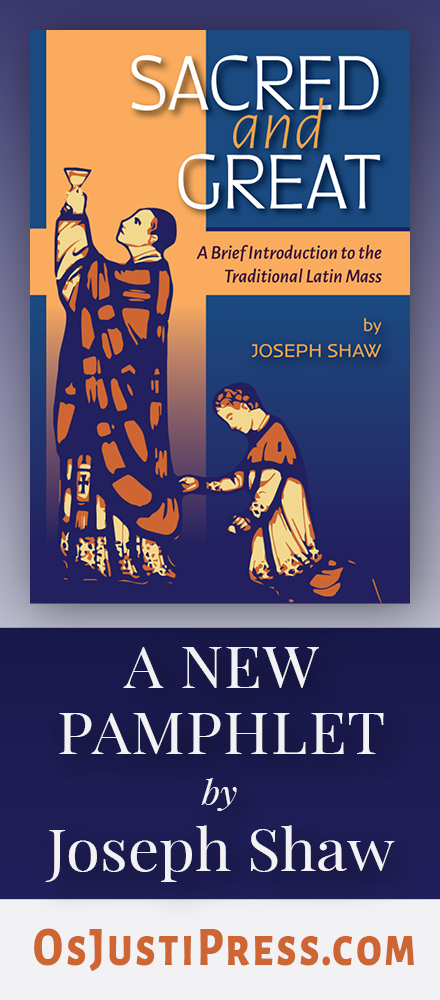Rorate Caeli are reporting the following in addition:
"One of our most trustworthy sources has finally broken the general silence and has confirmed that truly a document of great importance on the liturgy of the Latin Church "has been signed".
"However, just as yesterday we mentioned "...the Rite of the Mass...", this source cannot or will not confirm if this document of great importance impacts (a) the Traditional Roman Rite (or, as it is usually called in more adequate terms, "the liturgical rite and discipline, according to the prescriptions of Saint Pius V, with the adaptations introduced by his successors up to Blessed John XXIII"); or (b) the New Roman rite (which, regarding the rite of the mass, was approved on Holy Thursday, 1969, by the Apostolic Constitution "Missale Romanum", of Paul VI); or (c) both rites."
Another comment in this same post about the Vatican Radio report we've been hearing about:
"We thank the dear commentator who was able to transcribe what would have been said at Radio Vaticana, though apparently later expunged from the official transcript. Amidst the report on the conclusions of the Assembly of the French Episcopal Conference regarding "the Traditionalist question" ... the reporter would have said: "...Ciò, soprattutto, in vista della pubblicazione del motu proprio del Papa sul rito della Messa..." (That is: "This [the measures towards Traditionalists] especially in view of the publication of the Motu Proprio of the Pope on the rite of the Mass.")."
Saturday, April 08, 2006
"A document has been signed..."
Shawn TribeMore recent articles:
The Gospel of Nicodemus in the Liturgy of EastertideGregory DiPippo
By “the Gospel of Nicodemus”, I mean not the apocryphal gospel of that title, but the passage of St John’s Gospel in which Christ speaks to Nicodemus, chapter 3, verses 1-21. This passage has an interesting and complex history among the readings of the Easter season. For liturgical use, the Roman Rite divides it into two parts, the second of which...
“The Angel Cried Out” - The Byzantine Easter Hymn to the Virgin MaryGregory DiPippo
In the Byzantine Divine Liturgy, there are several places where the priest sings a part of the anaphora out loud, and the choir makes a response, while he continues the anaphora silently. In the liturgy of St John Chrysostom, which is by far the more commonly used of the two anaphoras, the priest commemorates the Saints after the consecration and ...
The LavaboMichael P. Foley
Lost in Translation #124 After the incensation, the priest goes to the Epistle side and washes his hands, reciting Psalm 25, 6-12: Lavábo inter innocentes manus meas: et circúmdabo altáre tuum, Dómine.Ut audiam vocem laudis: et enarrem universa mirabilia tua.Dómine, dilexi decórem domus tuae: et locum habitatiónis gloriae tuae.Ne perdas cum impii...
Spinello Aretino’s Altar of Ss Philip and JamesGregory DiPippo
At the very end of the 14th century, the painter Spinello di Luca Spinelli (1350 ca. - 1410 ca.), usually known as Spinello Aretino (from Arezzo) was commissioned to make a frescoed altarpiece for the Dominican church of his native city. The altar itself no longer exists; it was dedicated to the Apostles Philip and James, whose feast is traditional...
A Medieval Hymn for EastertideGregory DiPippo
Many medieval breviaries, including those of the Sarum Use, the Cistercians, Carmelites and Premonstratensians, have a hymn for the Easter season which is not found in the Roman Breviary, Chorus novae Jerusalem by St Fulbert, bishop of Chartres, who died in 1029. The original version of the Latin text, and the English translation of John Maso...
Two Upcoming Events from the Durandus InstituteGregory DiPippo
Our friend James Griffin of The Durandus Institute for Sacred Liturgy and Music wishes all our readers a joyous Easter season, by presenting two opportunities, at least for those in southeast Pennsylvania, to celebrate.First, this coming Sunday at 5pm, there will be a solemn Vespers in the traditional Latin rite for the Second Sunday after Easter a...
Letter to a Maximalist Music Director in a Minimalist WorldPeter Kwasniewski
Auguste Danse, Study of Three Singers (detail)The following is based on a real letter.Dear Friend,I’m sorry to hear that you’re experiencing some “ups and downs” with regard to the liturgy there, though it’s hardly surprising in a way. Your diocese is not well known for liturgical propriety or taste, and, beyond that, priests mostly have control ov...
The Tomb of St Peter Martyr in Milan’s Portinari ChapelGregory DiPippo
Here are some great photos from our Ambrosian correspondent Nicola de’ Grandi of the Portinari Chapel at the Basilica of St Eustorgio in Milan. They were taken during a special night-time opening made possible by a new lighting system; as one might well imagine, the Italians are extraordinarily good at this sort of thing, and more and more museum...
Recommended Art History and Artistic Practice Text Books for Homeschoolers... and Everyone Else Too!David Clayton
I want to recommend the Catholic Heritage Currricula texts books to all who are looking for materials for courses in art history, art theory and artistic practice at the middle-school or high-school level. These books present a curriculum that combines art history, art theory, and a theory of culture in a Catholic way. Furthermore, they provide the...
Launching “Theological Classics”: Newman on the Virgin Mary, St Vincent on Novelty & Heresy, Guardini on Sacred SignsPeter Kwasniewski
At a time of turmoil, nothing could be better or more important than rooting ourselves more deeply in the Catholic tradition. One of my favorite quotations is by St. Prosper of Aquitaine (390-455), writing in his own age of chaos: “Even if the wounds of this shattered world enmesh you, and the sea in turmoil bears you along in but one surviving shi...




















